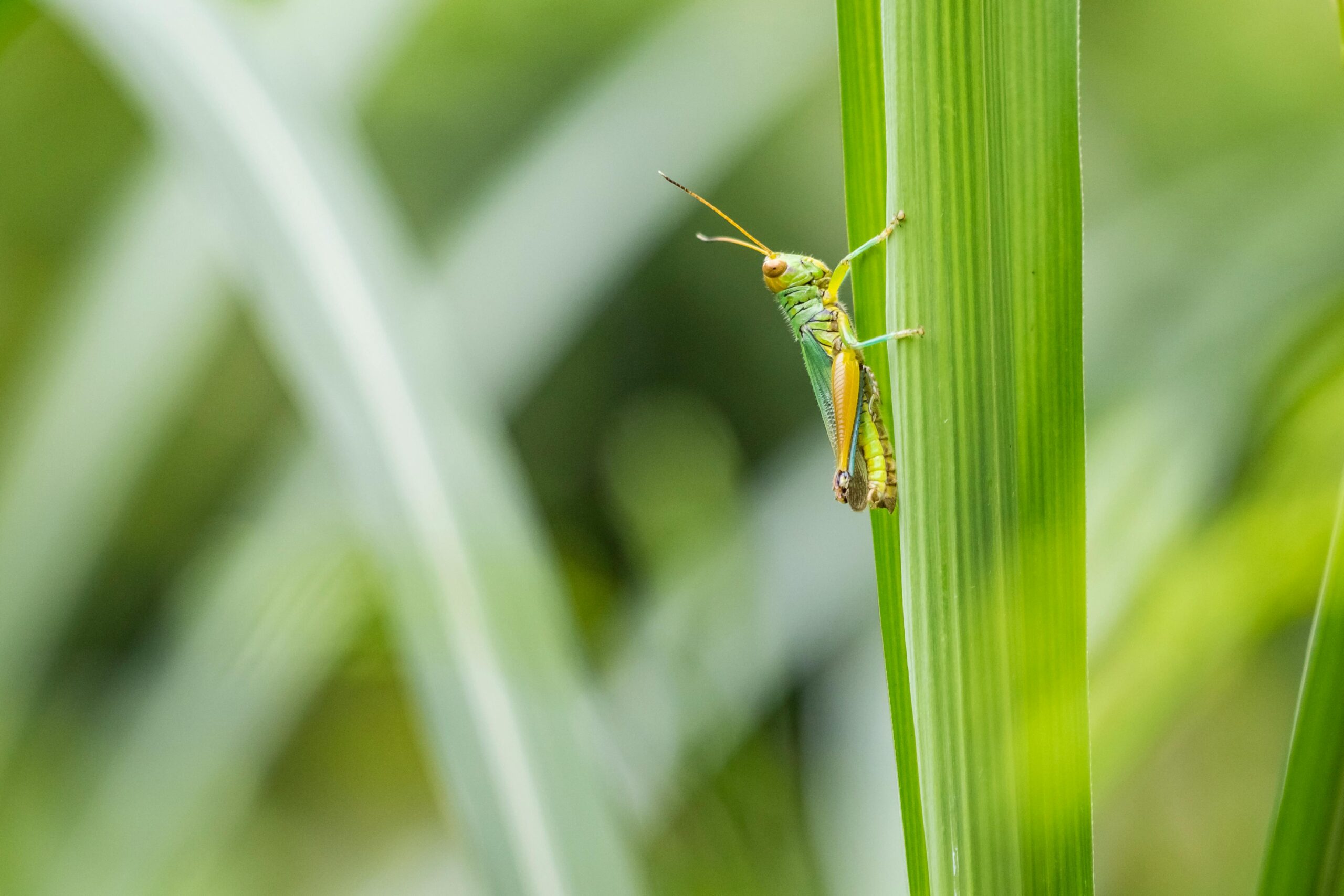(image credit: by Jimmy Chan)
Grasshoppers may look like simple bugs, but they’ve got a unique biological trick up their wings: their ears are on their bellies! Let’s dive into the curious world of insect hearing and explore how grasshoppers “listen” to the world around them.
Not Your Average Ear Placement
When you think of ears, you probably picture them on the sides of a head. But for grasshoppers, nature had other ideas. These jumping insects hear through their bellies—specifically, through a small organ called the tympanum, located on each side of their abdomen just behind their hind legs.
This thin, drum-like membrane vibrates in response to sound waves, much like a human eardrum. Despite its unconventional location, it serves the same function: converting those vibrations into nerve impulses that the brain can interpret.
How the Tympanum Works
The tympanum is essentially a sound detector. When air pressure from a sound wave hits the membrane, it begins to vibrate. These vibrations are transmitted to sensory cells connected to nerves, allowing the grasshopper to detect and respond to its environment.
Interestingly, grasshoppers don’t hear the full range of sounds like humans do. Their ears are especially tuned to frequencies produced by other grasshoppers—such as mating calls or territorial warnings. This is crucial for communication, especially in densely populated grassy fields.
Ears That Help Stay Alive
Why do grasshoppers need to hear, anyway? Aside from communication, their tympanal ears help them detect predators. The rustling of grass, the flap of a bird’s wings, or the footsteps of an approaching animal can all be picked up through these belly-based sensors—giving the grasshopper time to leap away.
In the wild, survival depends on awareness, and sound is one of the fastest ways to sense danger. So, even though their “ears” might be in a strange spot, grasshoppers are perfectly adapted to their environment.
A Design Found in Other Insects Too
Grasshoppers aren’t the only insects with creative ear placement. Crickets, for example, have tympanal organs on their front legs, and moths can have them on their wings or thorax. It’s a great reminder that evolution doesn’t stick to one design—it finds what works best for each creature’s lifestyle.


